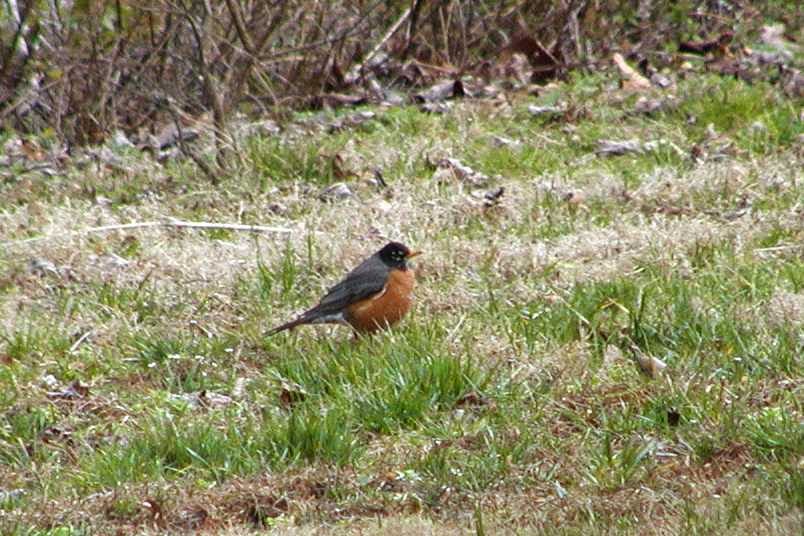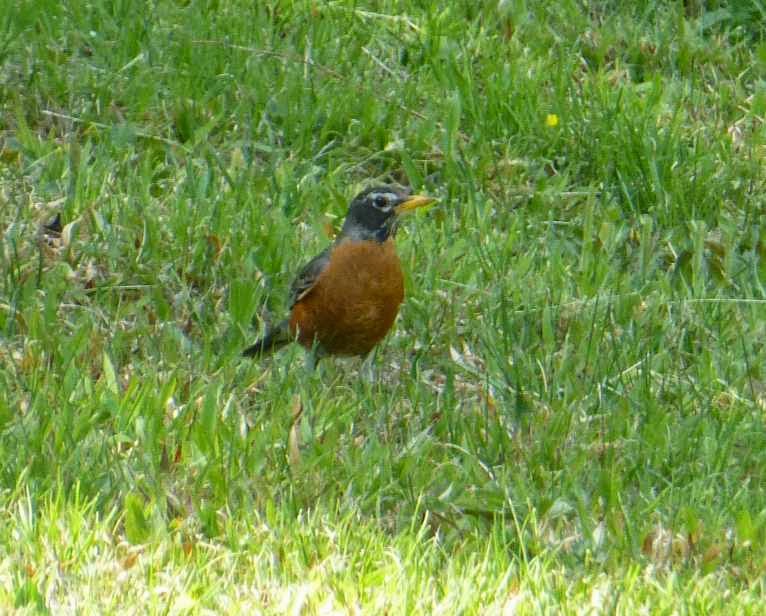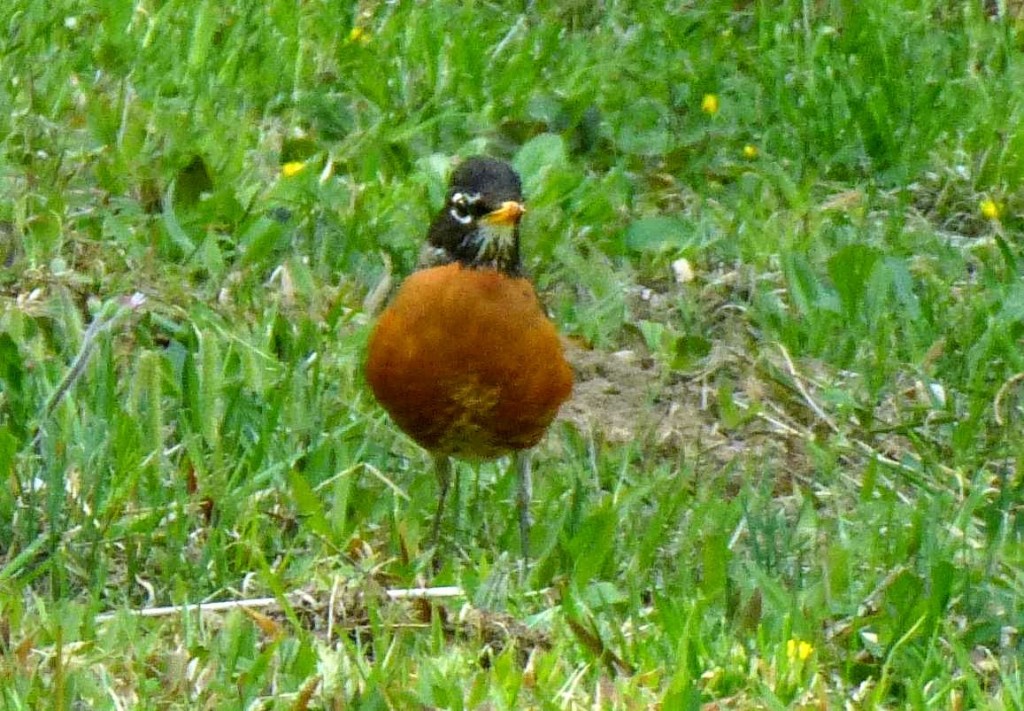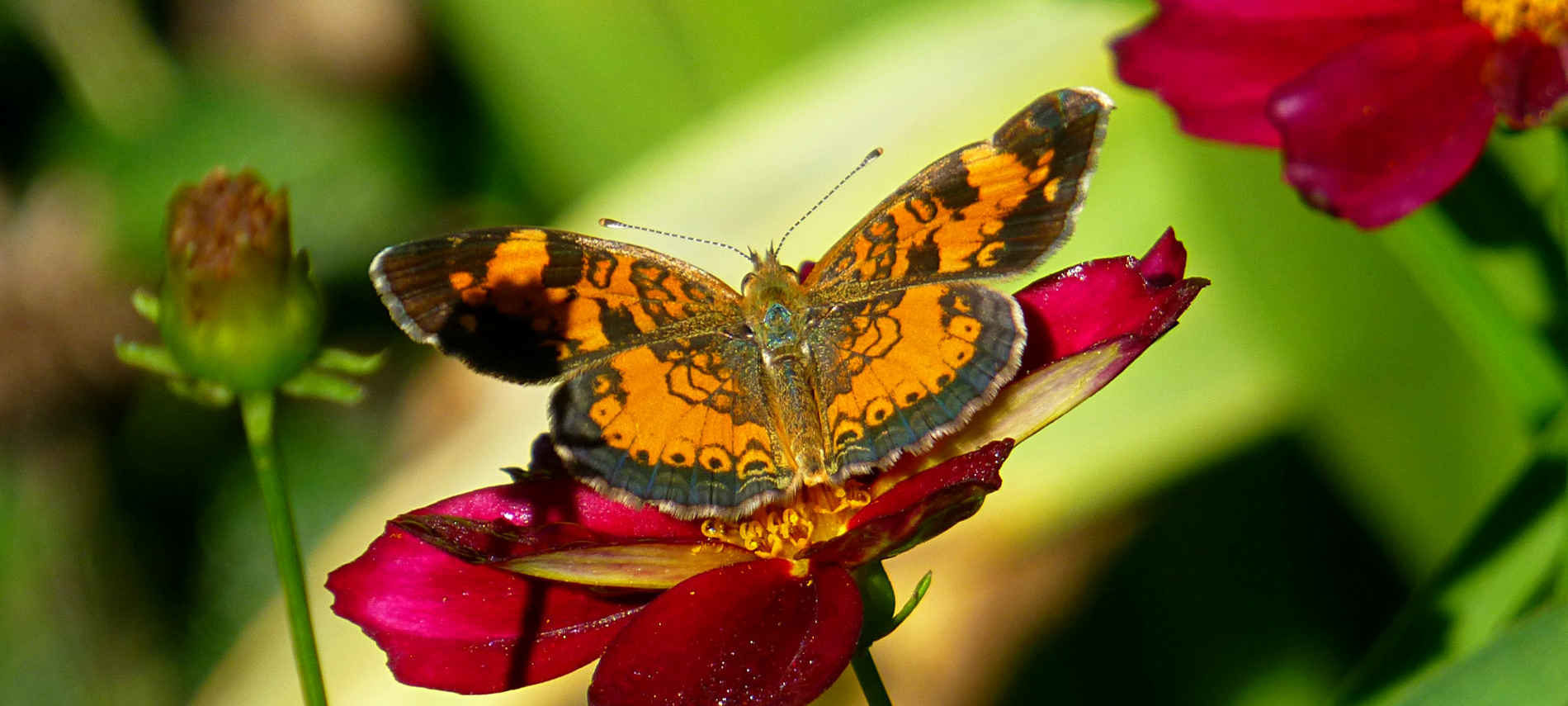 |
| American Robin at the Inn on Mill Creek B&B, 2012 |
If ever a bird had the ability to make winter seem a distant memory while frost is still very much on the ground, it would be the American Robin. It seems like as soon as we see robins doing their stop-and-go flutter across the grass in the apple orchard at the B&B, it’s like winter never happened. Interestingly, the American Robin is a year-round resident in most of the United States, but it spends most of the winter tucked away, roosting in trees.
 |
| American Robin in the orchard at the Inn on Mill Creek B&B |
American Robins are easy to spot come springtime, with their flashy, orange-red chests, dark heads and yellow bills. They’re also fairly large and fairly loud compared to other songbirds. The whistling song of an American Robin is clear and according to the Cornell Lab of Ornithology, is often described as “cheerily, cheer up, cheer up, cheerily, cheer up.” The pitch rises and falls, but the rhythm is steady.
 |
| Posing for the camera |
Other fun facts about the American Robin from the Cornell Lab of Ornithology:
- The oldest recorded American Robin was almost 14 years old, but typically, the entire population turns over on average every six years.
- Robin roosts in the wintertime can be as large as 250,000 birds.
- Females build their nests from the inside out, pressing dead grass
and twigs into a cup shape using the wrist of one wing. They also use
paper, feathers and moss to build nests. - The American Robin’s diet changes depending on the time of day. They like earthworms for breakfast and fruit later in the day. Robins can actually get drunk on honeysuckle berries.


Thanks for the cool info about Robins. We have a home on the eastern side of Marion, Grandview Peaks, a development. We’re at about 1730 elevation. We do not have robins. Wondering why?
I know some birds don’t like higher elevations. We have most other bird species. I have some gardens with good soil, nice worms too
We really aren’t that far from Old Fort as the crow flies. Maybe you know why we’re void of robins.
thanks
george
Hi George! Sometimes we have a lot of robins and sometimes we see only a few. Since we’re deep in the woods, our guess is that a bird of prey or other predator might be a factor since robins are larger birds than some of our other regular residents and maybe easier to see, so perhaps they stay in the trees more often to hide. We have seen hundreds of robins flocking at Biltmore Estate in Asheville at one time, which is a similar elevation to yours. The Blue Ridge Audubon Society might have some insight on why robins prefer some places to others: https://www.blueridgeaudubon.org. Hope you see some robins soon!